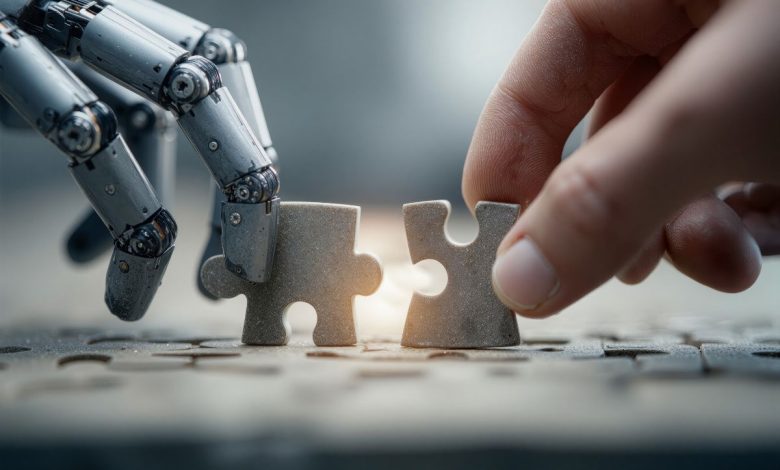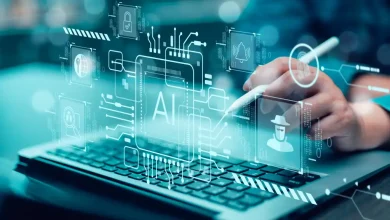
The Real Story About AI at Work
Worries about AI taking over human jobs are becoming more common, stirring a mix of concern and curiosity across many industries. This topic often makes headlines and gets people talking, shaping how we think about the future of work. It’s raising important questions about job security and how the role of human workers will evolve as AI becomes more prevalent.
But while the worries continue to mount, the reality is that teams aren’t disappearing just yet; they’re adapting. People are learning to work with technology instead of against it.
AI is changing the way we work: what we focus on, how we solve problems, and where our creativity fits. The opportunity from this is reshaping how humans and AI work together to make work more impactful, not less.
A New Kind of Productivity
We tend to think of productivity as doing more in less time. But that isn’t the case with AI. It’s giving us back hours we once dedicated to repetitive tasks and endless data sorting, freeing us to focus on the parts of our work that require more strategic thinking.
In marketing, for instance, AI can analyze performance data in minutes. But the insight still depends on human context. The tool can tell you what happened, and we can decide what to do next, knowing the big picture and how it will affect the overall marketing strategy.
That’s where the collaboration starts. As AI manages the technical details, people can refocus on meaningful deliverables. More time can be spent understanding context and addressing the challenges that algorithms alone can’t solve.
The Skills That Matter Now
As AI is changing the nature of work, it’s also changing the skillsets that matter most.
We’re moving from doing the work to directing it by asking better questions, reviewing outputs critically, and deciding when to trust or challenge what AI delivers.
According to the World Economic Forum’s Future of Jobs Report, nearly half of all skills will need updating within five years. But that doesn’t mean we all need to change our careers. It means we need to become more adaptable and comfortable working alongside systems that learn as we do.
That could look like learning to craft stronger prompts, understanding how algorithms make decisions, or simply recognizing when human input will create a better outcome. It means being AI-curious.
Why Empathy and Creativity Still Win
The more AI takes on, the more it reminds us of what makes us human.
AI can generate content or optimize a process, but it can’t care or connect the way we can. Those traits aren’t just “soft skills,” but they’re also strategic advantages.
Think about a customer-service exchange. AI chatbots are well-equipped to manage basic interactions and resolve simple issues efficiently. However, when emotions like frustration or confusion arise, it is human empathy that provides real solutions. While technology can process requests and answer questions, understanding and addressing complex feelings still requires a human touch.
In that sense, automation makes empathy essential, not obsolete. As AI handles more of the routine, people can focus on curiosity and creativity.
Reimagining How Teams Work
Human–AI collaboration works best when it’s intentional.
That means building systems and cultures that invite experimentation rather than fear. Some organizations are creating “AI sandboxes,” which are safe spaces where teams can test tools and learn before actually implementing it into real scenarios.
This kind of structure is how people gain confidence with new technology. It also builds a shared understanding across departments. Everyone learns how to think more critically about what AI should and shouldn’t do.
It creates an environment where technology feels less like a threat and more like a partner.
The Leadership Mindset Shift
Leaders have an outsized role in shaping this transition. How they talk about AI can either create trust or instill fear. When AI adoption is framed purely as a cost-saving measure, employees brace for cuts. When it’s presented as a way to expand human potential, people lean in.
Leaders should communicate transparently what AI is being used for, what won’t change, and how it can make work more impactful. A McKinsey study found that companies that openly discuss AI’s purpose and limitations see higher employee confidence and faster adoption.
This isn’t just about policy. There needs to be trust. When leaders make reskilling part of the plan and celebrate small wins, they send the message that AI isn’t replacing you; it’s reinforcing you.
Making Ethics Part of Everyday Work
Collaboration with AI comes with responsibility.
Bias, privacy, and data transparency aren’t abstract issues. Every prompt, model, and output has an effect.
That’s why it’s important for companies to be embedding ethical checks directly into their workflows. Instead of waiting for something to go wrong, they’re asking: Should we do this? Who benefits? Who might be left out?
Making space for those questions keeps technology grounded in human values. It also reminds employees that integrity is still at the foundation of innovation.
The Future of Work Is Human with AI by Its Side
If there’s one truth emerging from this transformation, it’s that, while roles may be redefined, people are not being replaced.
AI is changing what it means to contribute and to lead. But humans remain the drivers of purpose and connection. Those are the elements that make work feel worth doing.
The future stands where humans and AI learn from each other. AI is a great partner, and when we treat it as such, work becomes more efficient while still maintaining a human touch.



